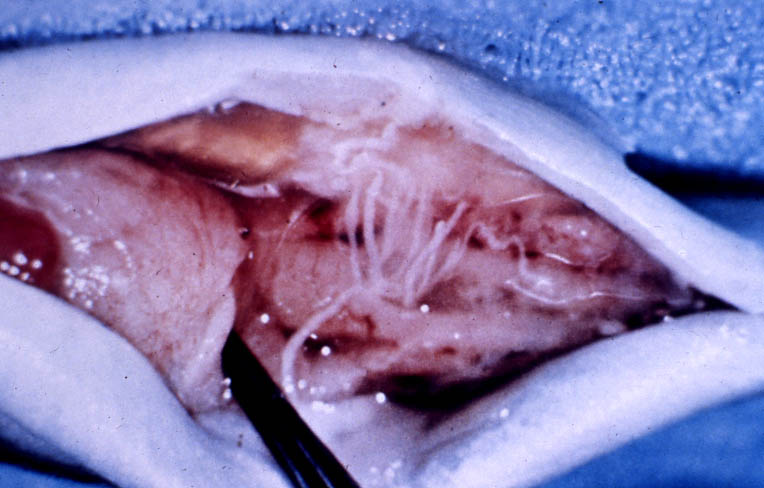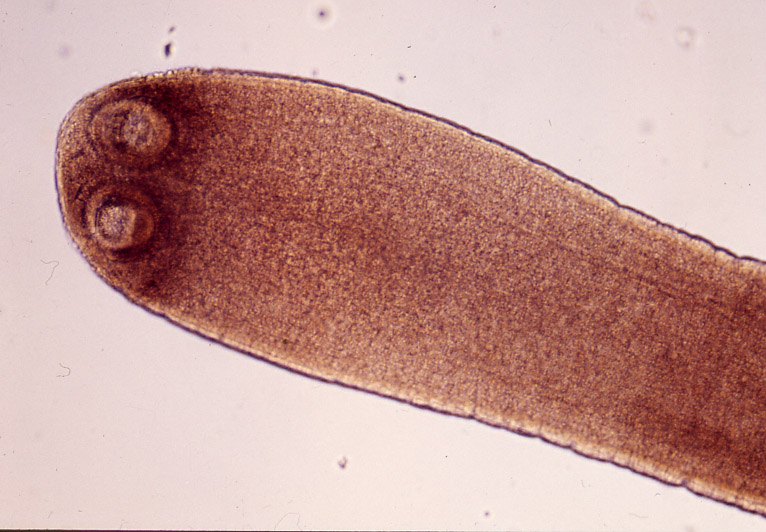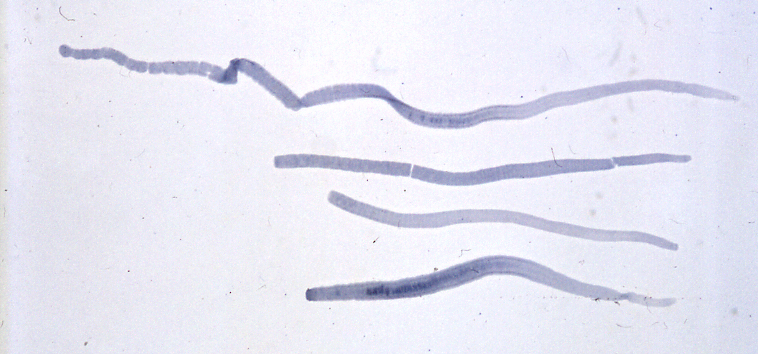
| Parasite | Proteocephalus plecoglossi |
|---|---|
| Taxonomy | Plathyhelminthes, Cestoda, Proteocephalidea |
| Hosts | Ayu (Plecoglossus altivelis) |
| Infection site | Intestinal tract |
| Clinical signs | No external signs are evident. A white filiform worm is observed in the intestinal tract (Fig. 1). |
| Parasitology | The body is ca. 5 mm long (Fig. 2). The parasite possesses 4 and 1 suckers at lateral side and apex of scolex, respectively (Fig. 3). Copepods are the intermediate host, and ayu become infected by ingesting them (Ogawa, 2004). |
| Pathology | It is considered that heavily infested seedlings are led to the death. |
| Health hazard | Since this parasite is not infectious to human, it is harmless in food hygiene. |
| Diagnosis | The parasite can be visually seen. Observe the morphology of scolex. |
| Other information | The disease outbreak occurred in cultured ayu which had been caught in the Lake Biwa in 1969 (Takahashi, 1973). However, the disease has hardly occurred recently. |
| References | Ogawa, K. (2004): Metazoan
diseases. Infectious and parasitic diseases of fish and shellfish. (ed. by
Wakabayashi, H. and K. Muroga), Koseisha
Koseikaku, pp.381-405. (In Japanese) Takahashi, S. (1973): Studies on Proteocephalus plecoglossi Yamaguti parasitizing ayu, Plecoglossus altivelis-I. Bull. Shiga Pref. Fish. Exp. Station, 24, 63-82. (In Japanese) |


Fig. 2. P. plecoglossi from ayu.

Fig. 3. Scolex of P. plecoglossi
(Photos by Y. Jo)
Fig. 1. Heavily infected ayu